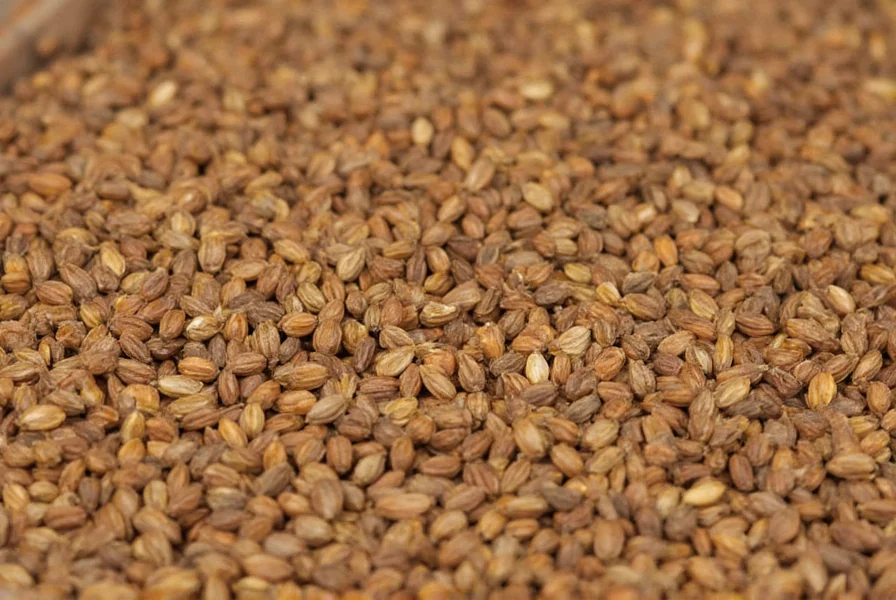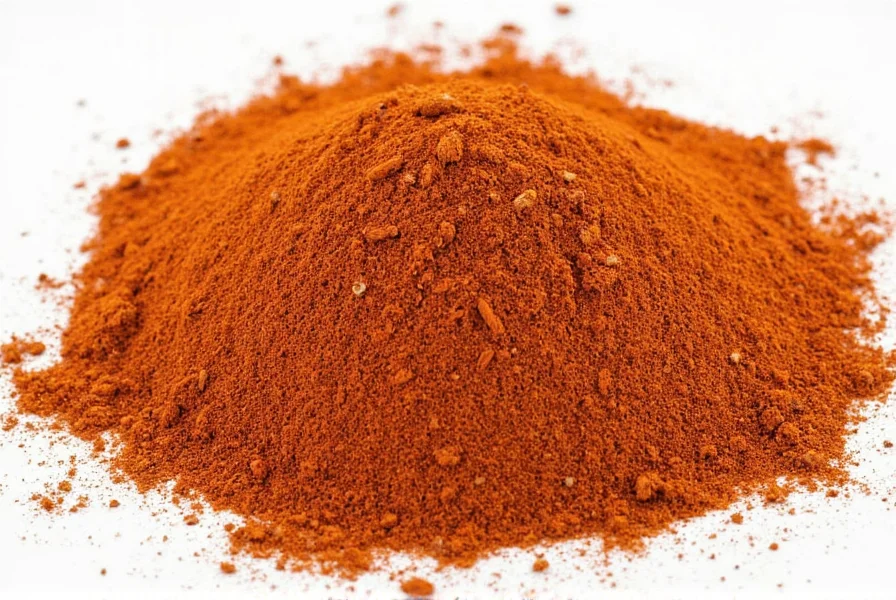Cumin's journey from ancient remedy to global kitchen staple spans thousands of years and multiple continents. This distinctive spice, known for its earthy, warm flavor with a hint of citrus, has become indispensable in cuisines worldwide—from Indian curries to Mexican chili and Moroccan tagines. Understanding where cumin comes from reveals not just its botanical origins but also its rich cultural significance across civilizations.
Botanical Identity and Plant Characteristics
Cumin (Cuminum cyminum) belongs to the Apiaceae family, which includes parsley, coriander, and caraway. This annual herb grows to about 30-50 cm tall, featuring slender stems, finely divided leaves, and small white or pink flowers arranged in伞-shaped clusters called umbels. The plant produces crescent-shaped seeds that contain the characteristic flavor compounds, primarily cuminaldehyde, which gives cumin its distinctive aroma.
Growing cumin requires specific conditions: it thrives in temperatures between 20-30°C (68-86°F), needs well-drained sandy or loamy soil, and requires approximately 3-4 months of frost-free weather to mature. The plant's sensitivity to cold explains why it flourishes in regions with long, warm growing seasons.

Ancient Origins and Historical Journey
Archaeological evidence places cumin's earliest use in the Eastern Mediterranean region. Excavations in Syria have uncovered cumin seeds dating back to the second millennium BCE. Ancient Egyptian texts mention cumin as both a culinary ingredient and a component in the mummification process. The spice appears in the Old Testament as well, referenced in Isaiah 28:25 and 27.
From its Mediterranean origins, cumin spread along ancient trade routes. By the Roman era, it had become a common seasoning throughout Europe. The spice gained particular prominence in Indian cuisine after arriving via trade routes around the first millennium CE. Historical records from ancient Greece and Rome document cumin's use not just as food but also as a medicinal herb for digestive issues and as a preservative.
Modern Global Production
Today, cumin cultivation spans multiple continents, with production concentrated in specific regions that provide ideal growing conditions. The following table shows the major cumin-producing countries and their approximate annual output:
| Country | Annual Production (metric tons) | Notable Growing Regions |
|---|---|---|
| India | 300,000-400,000 | Gujarat, Rajasthan, Uttar Pradesh |
| Iran | 60,000-80,000 | Kerman, South Khorasan |
| Syria | 20,000-30,000 | Aleppo, Homs |
| Turkey | 15,000-25,000 | Ankara, Konya |
| Mexico | 10,000-15,000 | Chihuahua, Zacatecas |
India dominates global cumin production, accounting for approximately 60% of the world's supply. The western Indian state of Gujarat alone produces nearly half of India's cumin. Indian cumin, particularly from the N7 variety grown in Gujarat, is prized for its high essential oil content and intense flavor. Iranian cumin, often called "Persian cumin," tends to have a slightly sweeter profile and lighter color.
Harvesting and Processing Methods
The cumin harvest occurs when the plant's stems and seeds turn brown, typically 120-150 days after planting. Farmers cut the plants at ground level and bundle them for drying. After drying, they thresh the seeds from the stalks, usually through mechanical separation or traditional beating methods.
Quality cumin undergoes careful cleaning to remove plant debris and impurities. Some producers roast the seeds lightly to enhance flavor, though this practice varies by region and intended use. The highest quality cumin maintains its natural oil content, which preserves both flavor and aroma. Properly stored in airtight containers away from light, cumin seeds retain their potency for up to two years.

Cultural Significance Across Civilizations
Cumin's historical importance extends beyond culinary applications. Ancient Egyptians used it in bread-making and as part of embalming rituals. In Roman times, cumin symbolized俭朴 (simplicity) and was commonly sprinkled on bread. During the Middle Ages in Europe, people carried cumin seeds to ward off chickens and thieves—a curious superstition with unclear origins.
In traditional Indian Ayurvedic medicine, cumin has been used for centuries to aid digestion and treat respiratory conditions. Many cultures associate cumin with love and fidelity; in ancient Greece and Rome, brides carried cumin seeds to ensure fidelity. These diverse cultural associations demonstrate how deeply cumin has been woven into human history.
Regional Varieties and Flavor Profiles
While all cumin comes from the same botanical species, regional growing conditions create subtle flavor variations that chefs and food enthusiasts appreciate:
- Indian cumin (often called jeera): Darker in color with a stronger, more pungent flavor and higher oil content
- Middle Eastern cumin: Lighter in color with a slightly sweeter, more delicate flavor profile
- Mexican cumin: Often more earthy with subtle citrus notes due to different soil composition
These regional differences explain why certain recipes specify cumin from particular origins. Professional chefs often blend cumin from multiple sources to create complex flavor profiles in their dishes.
Frequently Asked Questions About Cumin's Origin
What is the original country where cumin was first cultivated?
Archaeological evidence indicates that cumin was first cultivated in the Eastern Mediterranean region, particularly in ancient Egypt and Mesopotamia (modern-day Iraq), with records dating back to the second millennium BCE. Excavations in Syria have uncovered cumin seeds from this period, confirming its ancient origins in this region.
Which country currently produces the most cumin in the world?
India is the world's largest producer of cumin, accounting for approximately 60% of global production. The western Indian state of Gujarat is particularly renowned for its high-quality cumin, with the N7 variety being especially prized for its intense flavor and high essential oil content. India both consumes most of its production domestically and exports significant quantities worldwide.
Is cumin native to India or was it introduced later?
Cumin was not originally native to India but was introduced via ancient trade routes around the first millennium CE. Historical evidence suggests it arrived in India from the Middle East, where it had been cultivated since ancient times. Once introduced, cumin adapted well to India's climate and became deeply integrated into Indian cuisine and Ayurvedic medicine, to the point where many now associate cumin primarily with Indian cooking.
What plant does cumin come from and where does it grow naturally?
Cumin comes from the Cuminum cyminum plant, an annual herb in the Apiaceae family. In the wild, it grows naturally in warm temperate regions of the Eastern Mediterranean. The plant thrives in areas with long, hot summers and well-drained soil, which explains why it flourishes in regions like India, Iran, and the Middle East. The spice itself consists of the dried seeds of this plant, which develop their characteristic flavor as they mature.
How did cumin spread from its original region to other parts of the world?
Cumin spread from its Eastern Mediterranean origins through ancient trade routes. Phoenician and Arab traders carried it along the Silk Road to India and China. The Romans distributed it throughout Europe, where it became a common seasoning. Spanish and Portuguese explorers later introduced cumin to the Americas during the colonial period. This gradual diffusion explains why cumin became integral to diverse culinary traditions across multiple continents while maintaining its core identity as a warm, earthy spice.











 浙公网安备
33010002000092号
浙公网安备
33010002000092号 浙B2-20120091-4
浙B2-20120091-4